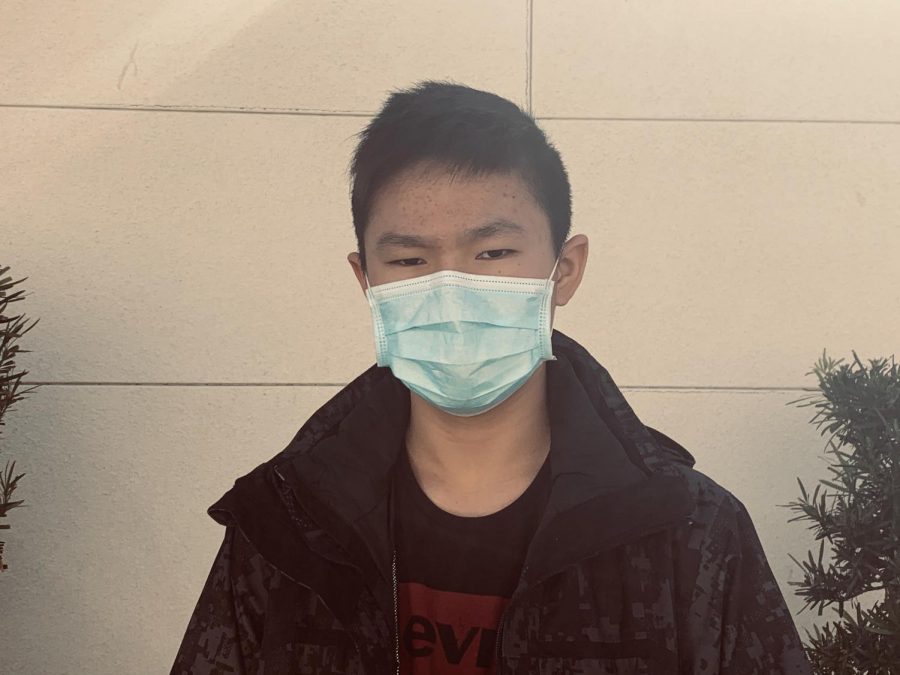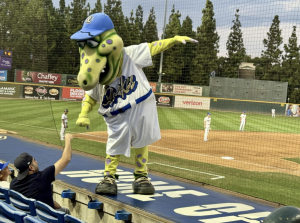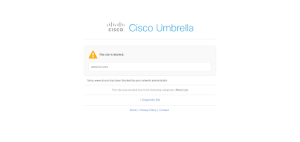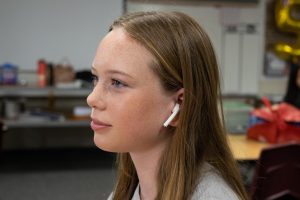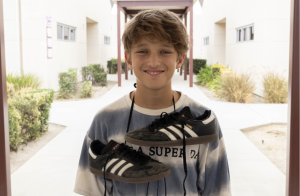Masses of Masks?
Many students, under one demograhic, have begun to wear masks in order to prevent the onset of the Coronavirus. However, it’s become a reason for misunderstandings and racism among Asian-American students.
February 5, 2020
The recent headlines of the Wuhan Coronavirus outbreak have become a part of the conversation at Day Creek Intermediate. However, the bigger picture at Day Creek seems to be on the faces of our classmates: masks worn in order to prevent the onset of the virus. Despite the fact that there haven’t been any reported cases of an outbreak in San Bernardino County, students still feel the need to protect themselves in response to the spread of the rumors. A simple cough triggers everyone’s conspiracy theories.
“[I was influenced to wear the mask] because I heard someone at the school had the Coronavirus,” seventh-grader Hanbo X. said.
Seen most commonly among Asian-American students, the masks have caused students to question their necessity, some even taking it as a reason to be racist toward Asians as the virus reportedly originated in Wuhan, China. Students appear to be avoiding those with masks on, for a seemingly inaccurate reason.
[I feel somewhat of an outcast wearing the mask] mostly because people want to avoid you. They don’t get that you want to protect yourself. They think that you have the actual [virus] instead of just trying to protect yourself from it,” student Yuhang X. says.
Many students’ automatic assumption when they see someone wearing a mask is that the purpose of it is to prevent the virus from spreading to others. However, from an eastern Asian perspective, their intention is to keep themselves from catching the virus.
Though atypical in American culture, these surgical masks are the equivalent of sunglasses in some Asian regions, quite different from the prevailing understanding at Day Creek Intermediate.
But how did the mask-wearing tradition in East Asia even come about?
The practice is believed to have begun in Japan, as a major influenza epidemic took the lives of millions. Outbreaks began to appear all over Asia. Covering the mouth and nose became a widespread way of protecting oneself from disease. In 1923, a Japanese earthquake released an unhealthy amount of smoke and ash into the air, creating another need for the masks. Chronic pollution issues in China and Korea have also necessitated protection from toxins in the air, in addition to the prevention of sickness in eastern Asian culture.
“My mom says I have to be safe because there’s a virus going around. She wants me to keep the mask on while I’m around a lot of people, especially in the cafeteria since many people are breathing the same air in a confined space,” Yuhang said.
The practice is generationally expected as masks aren’t customary in American culture. Many students’ parents, along with Yuhang’s, have a strong influence on their decision to wear the mask.
“[My parents] would definitely be worried and scared if I took the mask off because they want me to stay protected as of now.” student Mindy D. said.
It is inevitable that those who seem different will receive attention – and most of the time it isn’t very positive. In this case, it’s because of the masks and the Coronavirus. Because American and Asian societies differ substantially, and the masks that are worn represent one demographic, they are causing raised eyebrows. Despite the level of diversity in the US, our cultural uniquenesses become much more apparent in times like these.


